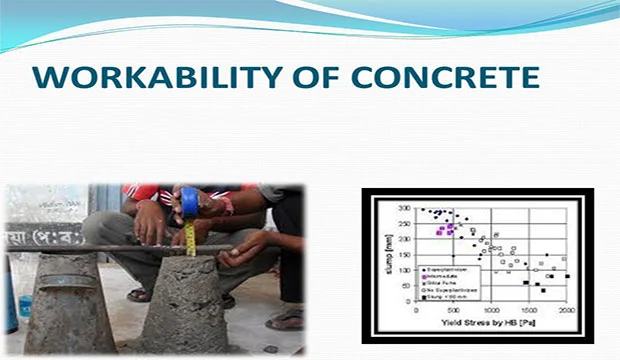The feature of concrete which decides the quantity of helpful internal work, indispensable to generate full compaction this is called workability which is the quantity of energy to surmount friction while compacting. This is labeled as the relative ease as well with which concrete can be mixed, transported, moulded, and compacted.
Factors that are responsible for workability:
- Water content: The expansion in water content boosts the fluidity of the concrete hence providing superior lubrication. This assists to enhance the concrete’s workableness.
- Size of aggregates: Generally the aggregates with the bigger surface areas are fewer and therefore less amount of water is necessary for lubricating the surface to lessen the friction. As a result, the large-sized concrete aggregate is more effective within specific limits without fail.
- Mix proportions: Aggregate/ cement ratio is the calculation of the leanness or richness of the concrete. In case of a higher aggregate/ cement ratio, the concrete turns out to be thinner.
- The shape of aggregates: Rounded aggregates in comparison with angular or flaky aggregates provide a better possibility of surmounting the frictional resistance.
- Surface texture of aggregates: Smooth or glossy texture aggregates offer better workability as it has less surface area in comparison to rough textured aggregates.
- Grading of aggregates: Well graded aggregate is the one with the slightest amount of empty spaces in a given volume. If the grading of aggregate is fine, the voids will be fewer and as a consequence, the workability will be higher.
- Use of admixtures: One of the most significant factors that affect the workability is the use of admixtures in concrete. The use of plasticizers and super-plasticizers sufficiently boost the workability of the concrete.
- Time and temperature: With the flow of time fresh concrete gets hardened. This is due to some of the water used to mix the concrete gets evaporated and some get soaked by the aggregates. Consequently, the workability of concrete diminishes with time.

